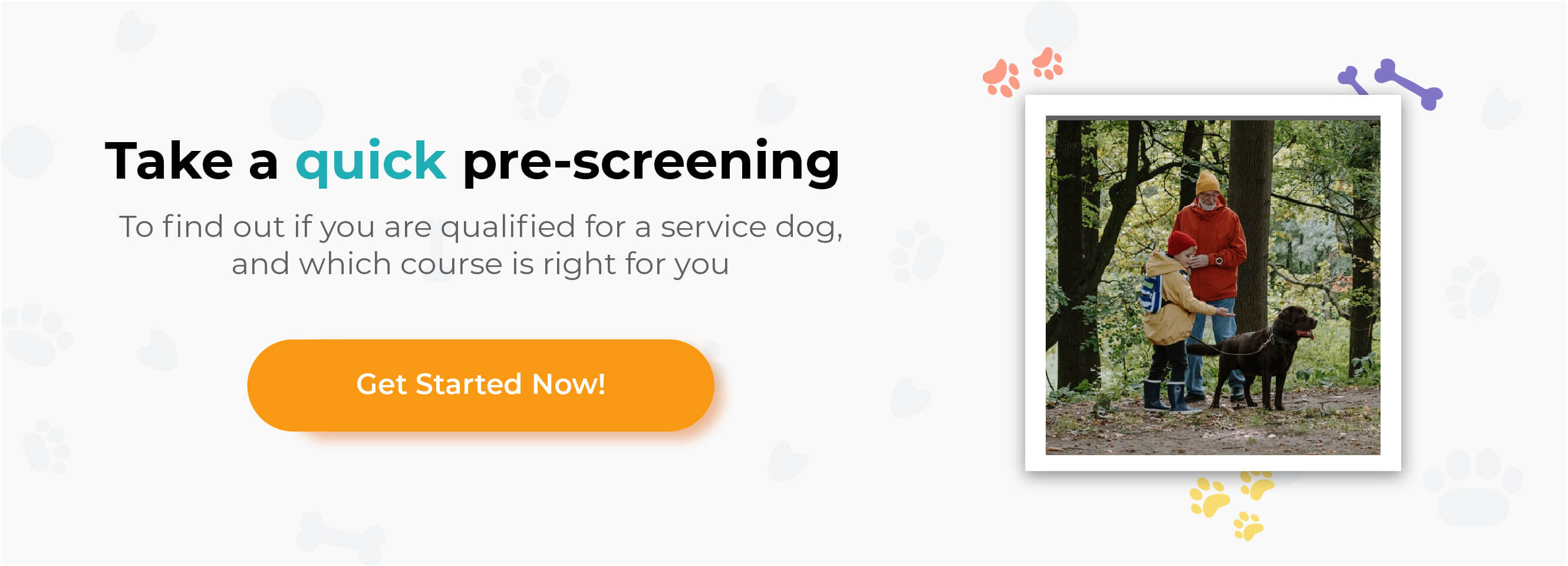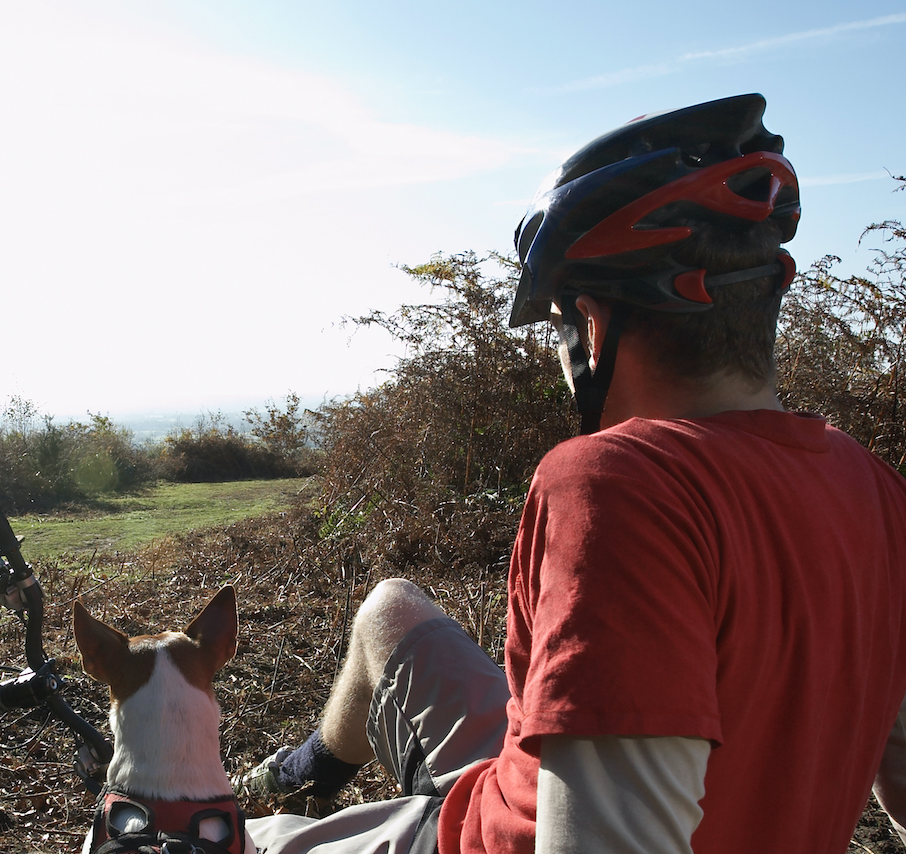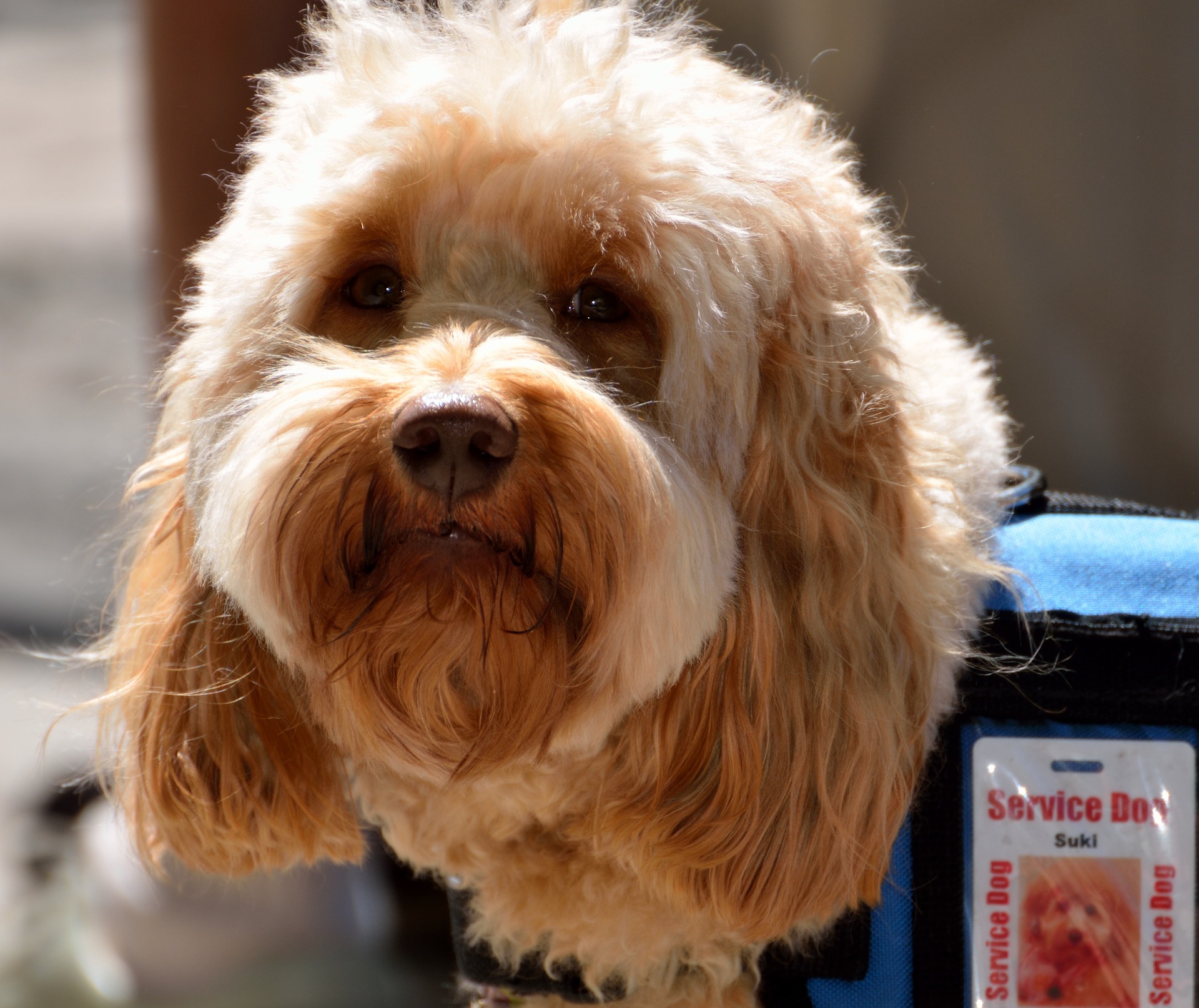
There are still discussions and much controversy in the service dog community-what approach is the correct one, what types of dogs are “real” service animals, what rights and responsibilities people with disabilities have...etc. Unfortunately, service dog laws vary on a local level, which presents even more challenges for handlers. However, one thing is undeniable fact-service dogs are of tremendous help to many people worldwide! The tasks that these dogs perform greatly improve the daily life of their owners and bring back the feeling of confidence, freedom, and self-love.
Dogs are lovely and smart creatures, who, when socialized and trained properly, can perform a wide range of tasks, based on their owners’ needs. Today we will evaluate in detail how service dogs can help and what tasks/commands are considered common for them.
Service Animals-Definition
You are very likely to already know what a “service dog” means. However, we would like to ensure that all of you who are reading this article are on the same page. Service animals are dogs only (some US states also accept miniature horses) who have been individually trained to do specific work for the benefit of a person with a disability. The disability can be physical and/or mental and the tasks performed, must be in direct relation to it.
Here exactly comes the difference between service animals and companion animals such as emotional support animals and therapy animals - the first type of assistance animal performs specific tasks, while the second type provides companionship and comfort only.
Service Dogs Rights
The Americans with Disabilities Act (ADA) is responsible for the protection of service animals in the US. Service dogs must be able to accompany their owners to every place open to the general public, such as restaurants, grocery stores, hotels...etc. The staff however is not required to provide food, and water or allow service animals to be seated at the table. Service dogs must be under control at all times, behave themselves, and should not disturb passersby/guests/visitors or cause damage. There are some exceptions to this rule. You can find out more on the ADA website here.
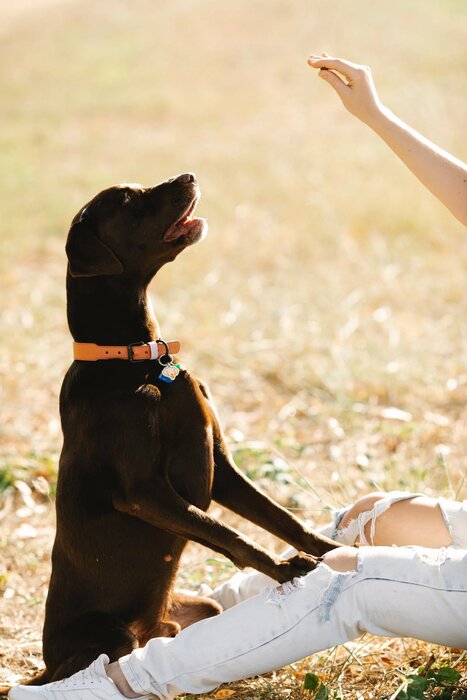
How Can a Service Dog Help?
There are various types of service dogs, that can perform different tasks, based on the person’s disability. Common types of service dogs are:
Guide dogs, mobility/balance dogs, alert dogs, psychiatric service dogs, hearing dogs, allergen detection dogs, and service dogs for children/adults with Autism.
There are also companion dogs for children/adults with Autism, who provide emotional support only, but do not do specific work for them. These dogs are not considered service animals. Service dogs can help with both physically-related and emotionally-related tasks, that can be applied to situations at home and while out in public. Service dog commands/tasks can be divided into two groups:
1. Basic commands;
2. Advanced commands/tasks.
Basic Commands
Basic obedience is mandatory for service animals, as they need to know the fundamentals and behave themselves in public places, before going through more advanced training. Essential basic obedience commands that service dogs should know are:
Sit
By teaching your paw friend this command you will make sure that he/she is able to get into a sitting position when you ask him/her to do it. It is very likely that situations occur while in public, that require your dog to calmly sit;
Stay
This command will ensure that your paw friend is able to remain in position until you release him/her (use a release word);
Come
This is another essential task, that will help you prevent your dog from getting too far from you, sniffing around, or being distracted by various stimuli. By teaching your paw friend the “come” command, you will make sure that he/she will not get into trouble and quickly return to you when called;
Name
If you want to be able to get your dog’s attention regardless of the situation, he/she should be able to recognize his/name and respond to it- this is the so-called “recall” command;
Watch me / Look at me:
These commands are the fundamentals of focus training. It is mandatory for service dogs to work on their focus skills and be able to ignore all types of distractions in their surroundings;
Stand
This command will help your paw friend move from a sitting or a lying position to a standing position and prepare to continue his/her walk;
Down
It is a very useful command, especially while in public, where your dog may need to remain in a lying position;
Leave it
All owners are likely to benefit from teaching their dogs (whether pets or service dogs) this command, to prevent them from swallowing something toxic/dangerous for them or destroying valuable items;
Heel
Well-trained service dogs should be able to calmly walk by their owner's side, keeping the same pace as them, without pulling on the leash;
Quiet
This command will teach your paw friend to recognize when it is inappropriate to bark. It can be helpful in all types of situations where there are triggers present or your dog wants to get your attention;
Back up
You can benefit from this command if you often visit crowded places, where your paw friend will need to not obstruct access to any items on the premise. Also, you can apply it to situations where your dog is about to jump on other people.
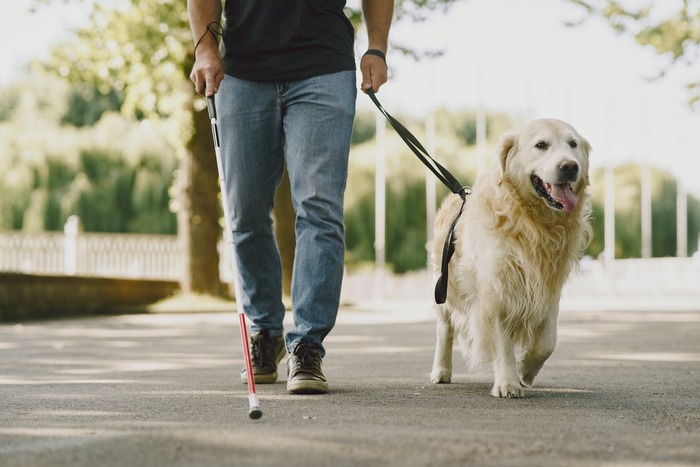
Advanced Tasks
What advanced tasks your service dog will perform for you, basically depends on your disability and thus your needs. These tasks can be related to a physical or a mental disability and will require the dog to go through specific training. Also, based on the specific work/tasks, certain physical features may be required as well i.e. a proper size if the task is physically demanding, or a long nose, if the dog will need to detect scents. Examples of advanced service dog tasks are:
Guide tasks
Although these tasks are considered suitable for people with visual impairments only, individuals with hearing impairments and mental disabilities can benefit from them as well. Guiding the handler to a safe place / their home can help a person who due to a physical impairment or the feeling of being detached from reality, can not navigate their surroundings;
Mobility/Balance tasks
It is the same case here. This type of task will definitely benefit a person with mobility impairments. However, if an individual deals with dizziness, blurred vision, tiredness, vertigo, i.e. due to the side effects of medication, their service dog can help them keep balance and move from one location to another;
Retrieve tasks
Service dogs can be trained to bring medication, keys, phones, beverages...or any items, that their owner needs but is unable to get on their own;
Alert tasks
Alert tasks can find application in many areas of people’s lives- whether alerting for low/high blood sugar levels, oncoming cardiac episodes, seizures, anxiety attacks, allergens, specific sounds, or alerting family members/passersby that the owner needs help, these tasks can be lifesaving;
Reminder tasks
Reminding the owner to take medication, or do their daily activities like go eat, sleep or feed the dog, are useful for people who are on medication, that has slowed down the central nervous system; who suffer from decreased concentration; insomnia...etc;
Psychiatric Service Dog tasks
These are primarily related to tactile stimulation and Deep Pressure Therapy, where the dog’s weight and warmth provide a calming effect;
Interrupting tasks
People who tend to perform harmful types of behavior / repetitive behaviors can greatly benefit from this task;
Protecting / Buffer tasks
We would like to note that by “protecting” tasks, we do not refer to protection dogs (these are not a type of service animals) but to using their body to protect their owners from falling and hurting themselves or keeping a distance from passersby in public (acting as a buffer);
Response tasks
We have generalized these, as they can refer to various tasks the dog does after an episode has occurred. Examples of response tasks are laying next to the handler until he/she feels better, dialing 911, turning off/on the lights, cleaning up items from the floor...etc.
Training a service dog in advanced tasks can be more challenging and time-consuming, which is why you should clarify first what your needs are and what you want to train your dog to do for you. Although good service dogs are intelligent and trainable, you should remember, that they are living beings and should have quality time to rest. They should not be given too many and too challenging tasks.
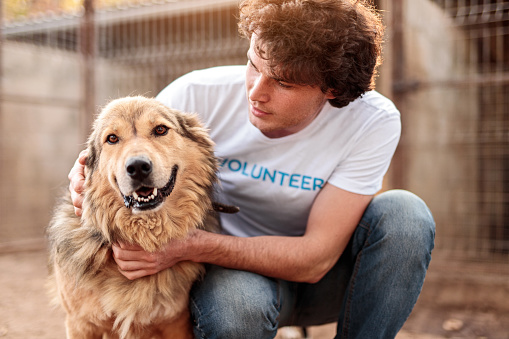
How to Get / Train a Service Dog
If you struggle with how the training process should be properly conducted, you can always turn to a professional trainer or a training organization. Getting an already-trained service dog can be financially challenging, as you may need to spend thousands of dollars (up to 30 000 or even more). However, funding options may be available. Non-profit organizations, on the other hand, are likely to charge you only application fees. The disadvantage of this option is the possibility for you to wait much time (maybe a year) to get a service dog, as there are long waiting lists.
You can also train your own service dog by taking an online course. You will receive support and guidance from trainers, but you still be able to adapt the training process to your needs and conduct training at your pace. The big advantage of this option is that you can adjust the training process, as there is no one that knows your needs better than yourself. The disadvantage, if it can be considered so, is that you will have to be disciplined, consistent, patient, and not give up if the training process does not go smoothly at all times.
Can All Dog Breeds Become Service Dogs?
There are no restrictions on what breeds can become service animals, unless your country has banned certain dog breeds, such as the UK. Discrimination against service dogs based on their breed is not permissible. When talking about dogs as individuals- there are some main features that all good service dogs have- intelligence, trainability, calm demeanor, and friendly personality. However, this does not automatically mean that you can never train your dog as a service dog if he/she does not have the perfect personality for that, but it may take much time and effort.

